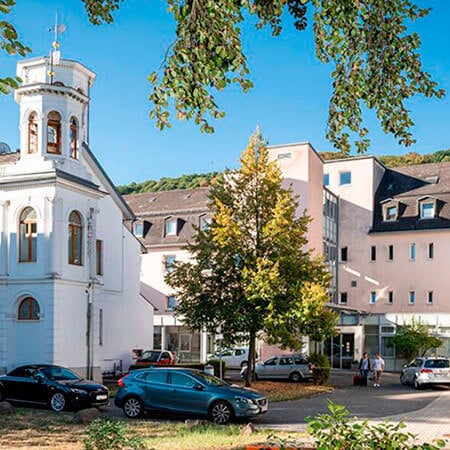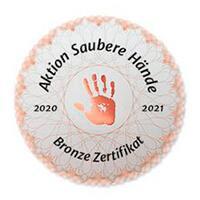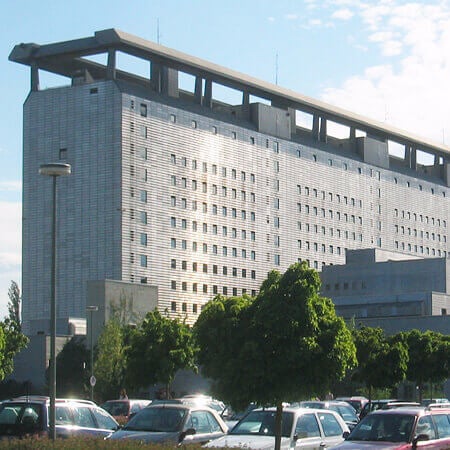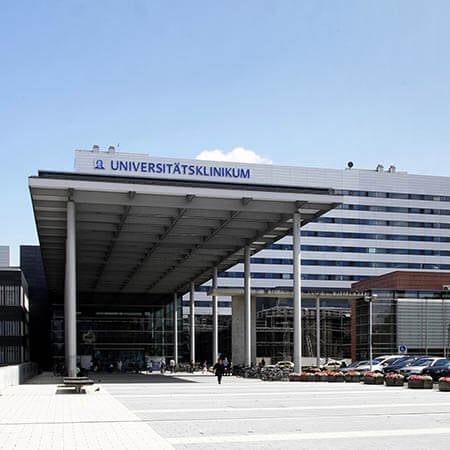Ependymoma — Radiotherapy: treatment in the Best Hospitals in the World
Treatment prices are regulated by national law of the corresponding countries, but can also include additional hospital coefficients. In order to receive the individual cost calculation, please send us the request and medical records.

Department of Radiation Therapy and Radiation Oncology
The Department of Radiation Therapy and Radiation Oncology offers all types of modern radiation therapy for the highly effective treatment of benign and malignant tumors. The department is equipped with three linear accelerators and brachytherapy systems, which provide patients with the safest, most effective, and most sparing irradiation of tissues affected by oncopathology. The department also provides radiotherapy planning and radiosurgery. An ultramodern technical base, exceptional professionalism, and experience of the department's physicians are the cornerstones of successful clinical practice.





Department of Radiation Therapy
According to the Focus magazine, the University Hospital of Ludwig Maximilian University of Munich is regularly ranked among the best medical institutions in Germany! The hospital is the largest multidisciplinary medical facility, as well as a leading research and training center in Germany and Europe. The hospital is proud of its bicentenary history and tirelessly confirms its primacy at the national and international levels. The outstanding quality of medical care is complemented by highly productive research activities, thanks to which many effective diagnostic and therapeutic methods, saving people’s lives, have been presented in medical practice.







Department of Radiation Therapy
According to the Focus magazine, the Department of Radiation Therapy ranks among the top German medical facilities in the area of its specialization! The department offers all types of modern radiation therapy for cancer treatment at the highest level of university medicine. The priorities of the department's work include the treatment of tumors of the gastrointestinal tract, urogenital system in men, gynecological tumors in women, oncopathologies of the nervous system, as well as head and neck tumors. Each department's specialist strives to ensure all the patients with the most effective and at the same time customized treatment. Due attention is also paid to radiation protection.





An ependymoma is a tumor originating from the ependymal cells that line the ventricles of the brain and the central canal of the spinal cord. Radiation therapy is the second most important method of ependymoma treatment after surgery. It is usually performed after tumor removal surgery and is less commonly used as a stand-alone method of local control. Doctors abroad use advanced methods of radiation therapy, including proton therapy, which is considered the best way to destroy tumors of the central nervous system in children.
Content
- When can radiation therapy be used for ependymomas?
- Methods of radiation therapy in ependymoma treatment abroad
- Proton therapy for ependymomas
- Where to undergo your ependymoma treatment?
When can radiation therapy be used for ependymomas?
Radiation therapy is not required for all patients with ependymomas, as the tumor is usually removed surgically. Many people will not need any other treatment after surgery.
Below are some indications for radiation therapy at hospitals abroad:
- incomplete removal of grade 1 ependymomas;
- after surgery for grade 3 ependymomas;
- in the case of total removal of grade 2 ependymomas, the decision on postoperative radiation therapy is made individually, taking into account additional risk factors for recurrence (age, histological type, tumor location, etc.);
- ependymoma recurrence after its removal.
Radiation therapy is not usually used as a primary treatment for ependymomas. The exception is when surgical treatment is not possible due to medical contraindications. Radiation therapy may provide long-term control of the disease and may even cure ependymoma completely, but this is less likely than surgery. In addition, radiation therapy reduces the size of the tumor not instantly but gradually, which is a disadvantage for patients with severe clinical symptoms.
Methods of radiation therapy in ependymoma treatment abroad
According to the volume of irradiated tissue, radiation therapy for ependymomas can be one of the following:
- total craniospinal irradiation (of the entire central nervous system);
- focal irradiation is when radiation is delivered only to the tumor.
In the past, total craniospinal irradiation for ependymoma treatment was used more frequently than it is today. The method is not safe, and the benefits for most patients are questionable. Most ependymomas do not even spread within the central nervous system, and the risk of dissemination is about 15%. However, if the tumor is malignant and has spread throughout the nervous system, doctors can perform total irradiation of the skull and spinal cord.
Doctors abroad use modern and high-precision irradiation options, including:
- IMRT, which makes it possible to reduce the dose of radiation to tissues, damage to which is important to avoid;
- VMAT is an improved version of IMRT that allows doctors to perform an irradiation session several times faster;
- IGRT is a visual control using CT or MRI scans before each irradiation session;
- SBRT helps to irradiate the tumor more accurately and destroy the tumor in 1-5 treatments instead of 30-33 sessions.
Proton therapy for ependymomas
Some large hospitals abroad use proton therapy. This is the safest way to irradiate the central nervous system. It is preferred for children, as it reduces the risk of developing complications from the growing brain and also reduces the risk of the development of secondary tumors due to the influence of radiation.
Proton therapy uses protons instead of photons for irradiation. Protons release most of their energy only inside the target (tumor). On the way there, however, almost no energy is released, as a result of which protons minimally irradiate the tissue through which they pass.
This method of treatment for ependymomas is not only safer, but possibly more effective. Published studies show that after surgery and proton therapy, the risk of recurrence is very low, even in patients with malignant ependymomas. It does not exceed 8-10% within 5 years. Most patients recover completely from cancer, and the risk of developing severe side effects from such irradiation is very low.
Where to undergo your ependymoma treatment?
You can opt to undergo your treatment abroad to:
- take advantage of modern types of radiation therapy using state-of-the-art equipment;
- undergo your radiation therapy faster, namely in 1-5 sessions instead of 30-33 (only if a patient has a small benign tumor with clear boundaries);
- use proton therapy, for example, in the treatment of children;
- lower the risk of tumor recurrence;
- lower the risk of post-radiation complications.
On the Booking Health website, you can find out the cost of treatment at hospitals abroad and choose a medical care program at the best price. The specialists from the Booking Health company will select a hospital for you and arrange your trip. When you make your appointment through Booking Health, the cost of treatment will be lower than when you contact the hospital directly, due to the lack of taxes for foreign patients.
Authors:
The article was edited by medical experts, board certified doctors Dr. Nadezhda Ivanisova and Dr. Sergey Pashchenko. For the treatment of the conditions referred to in the article, you must consult a doctor; the information in the article is not intended for self-medication!
Sources:

